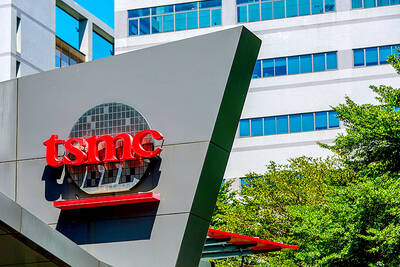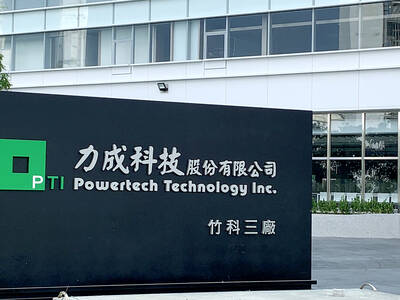With the hottest days of summer fast approaching, Shanghai is making preparations to seed clouds over the city in order to make it rain, in the hope that a couple of degrees of reduced temperatures will help ward off brownouts, or worse, here in China's commercial capital.
Even now, city inspection teams are visiting factories, identifying the least efficient energy consumers, possibly to be closed down for a time, and thermostats are being raised in public offices. City officials say they are even contemplating shutting down the huge flashing advertising signs that made the Bund, or downtown river front in Shanghai, China's largest city, the neon equivalent of Times Square.
With China projecting a 20-million-kilowatt shortfall in electricity supplies this year, actions like these are anything but isolated. With severe power shortages predicted for the country's southern and eastern regions, Guangzhou, China's third largest city, an industrial powerhouse, has had rationing since January, six months earlier than the emergency measures put into effect last year.
Discussions about China these days are often dominated by economic terms like "overheating," and "hard versus soft landings."
What is described as being at issue, typically, is whether the country's leaders can continue to successfully manage this huge and increasingly complex economy at growth rates that are among the world's fastest.
The rush to find short-term, sometimes even fanciful-sounding, palliatives for the country's immense power crunch, however, reflects creeping doubts of a more profound order. These concerns have recently been expressed even at the level of China's normally serene and self-confident-sounding senior officials.
The worry, put bluntly, is that the world simply may not have enough energy and other resources for China to continue developing along present lines, especially at its present rate. Furthermore, sharply increased environmental damage might make the country unlivable, even if such growth could be sustained.
China's predicament is reflected in a simple statistic: This country is already the world's second-largest consumer of energy, and yet on a per capita basis, the Chinese consume scarcely 10 percent of the energy used by Americans.
In material terms, the contemporary Chinese dream is not so different from the traditional American dream, of spacious homes full of power-consuming appliances and a car or two in the driveway, and therein lies the source of concern for the country's leaders -- and indeed for the world. As urbanization gathers pace here, there is a growing sense that such dreams will collide with intractable limits.
"If we use the patterns of today, China cannot double its economy," said Chen Jinhai, director of the Shanghai provincial government's Energy Commission and Environmental Protection Department. "We would need the energy of Mars or other planets. Our consumption may still be less than the U.S. or Japan, but the key for our future will have to be greater efficiency."
Chen is far from a lone voice speaking about the severe environmental and resource limitations that will challenge this country's seemingly irresistible rise of late. Indeed, his perspective echoes that of senior policy makers in Beijing.
"If we continue with the massive consumption of resources, shortages will only get worse, it will become very hard to maintain stable, high-speed growth, and the economy risks declining greatly," wrote Ma Kai, director of the State Development and Reform Commission, in a sobering recent article in People's Daily, the Communist Party newspaper. "Now we are at a key point in the industrialization and urbanization process. If we don't transform our economic model, we could lose the ability to grow."
According to Zhang Jun, a prominent Chinese economist who has made a comparative study of China and India, China consumes three times the energy and 15 times the amount of steel as its neighbor, even though the Chinese economy is only roughly twice as large, and is growing only about 10 percent faster than India's.
Part of this picture comes from an intensive focus on manufacturing and exports, which many economists say has led to over-industrialization and empty growth. A lot of the responsibility for wastefulness can be laid to duplication, with each province -- and indeed many city governments -- simultaneously pushing for the same kind of growth, based on industrial parks and manufacturing zones. The municipalities that boast of becoming China's Silicon Valley, to take one common example of this trend, are almost too numerous to count.
"China will definitely be facing a huge, huge challenge in a decade or so if the growth patterns don't change," said Zhang, who is the director of the China Center for Economic Studies at Fudan University in Shanghai. "Ours is an extreme case of the East Asian model, and we are coming quickly toward the limitations in terms of the way we use energy, in terms of the environment, and even in terms of labor."

The DBS Foundation yesterday announced the launch of two flagship programs, “Silver Motion” and “Happier Caregiver, Healthier Seniors,” in partnership with CCILU Ltd, Hondao Senior Citizens’ Welfare Foundation and the Garden of Hope Foundation to help Taiwan face the challenges of a rapidly aging population. The foundation said it would invest S$4.91 million (US$3.8 million) over three years to foster inclusion and resilience in an aging society. “Aging may bring challenges, but it also brings opportunities. With many Asian markets rapidly becoming super-aged, the DBS Foundation is working with a regional ecosystem of like-minded partners across the private, public and people sectors

Taiwan Semiconductor Manufacturing Co (TSMC, 台積電) has secured three construction permits for its plan to build a state-of-the-art A14 wafer fab in Taichung, and is likely to start construction soon, the Central Taiwan Science Park Bureau said yesterday. Speaking with CNA, Wang Chun-chieh (王俊傑), deputy director general of the science park bureau, said the world’s largest contract chipmaker has received three construction permits — one to build a fab to roll out sophisticated chips, another to build a central utility plant to provide water and electricity for the facility and the other to build three office buildings. With the three permits, TSMC

BREAKTHROUGH TECH: Powertech expects its fan-out PLP system to become mainstream, saying it can offer three-times greater production throughput Chip packaging service provider Powertech Technology Inc (力成科技) plans to more than double its capital expenditures next year to more than NT$40 billion (US$1.31 billion) as demand for its new panel-level packaging (PLP) technology, primarily used in chips for artificial intelligence (AI) applications, has greatly exceeded what it can supply. A significant portion of the budget, about US$1 billion, would be earmarked for fan-out PLP technology, Powertech told investors yesterday. Its heavy investment in fan-out PLP technology over the past 10 years is expected to bear fruit in 2027 after the technology enters volume production, it said, adding that the tech would

YEAR-END BOOST: The holiday shopping season in the US and Europe, combined with rising demand for AI applications, is expected to drive exports to a new high, the NDC said Taiwan’s business climate monitor improved last month, transitioning from steady growth for the first time in five months, as robust global demand for artificial intelligence (AI) products and new iPhone shipments boosted exports and corporate sales, the National Development Council (NDC) said yesterday. The council uses a five-color system to measure the nation’s economic state, with “green” indicating steady growth, “red” suggesting a boom and “blue” reflecting a recession. “Yellow-red” and “yellow-blue” suggest a transition to a stronger or weaker condition. The total score of the monitor’s composite index rose to 35 points from a revised 31 in August, ending a four-month